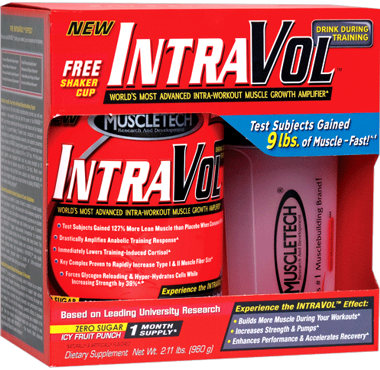By Veeraj Goyaram | Supplement Scientist & Product Developer
There was a time when intra-workout nutrition ruled the supplement conversation. Shakers filled with BCAAs and designer carb blends (e.g. Waxy maize starch, Vitargo, etc) were gym staples, and nearly every lifter swore by sipping something mid-session.
The logic of intraworkout supplementation was straightforward: feed the muscles during the workout, minimise catabolism (muscle breakdown), and boost performance.
Fast forward to today!
But flash forward to today, and the hype has cooled. Some say intra-workouts are irrelevant now. Others argue they were never necessary to begin with.
Yet if you look closer, you’ll find that intra-workouts didn’t disappear—they just simplified.
Walk into any supplement store today and you’ll still find “intra” formulas—though many are now basic BCAA + electrolyte blends. Once touted as the holy grail of performance fueling, intra-workouts now risk becoming little more than glorified hydration drinks.
So, what happened?
What Actually Drove the Intra-Workout Craze?
The early enthusiasm around intra-workout nutrition was based on valid theory:
-
Resistance training increases amino acid oxidation and depletes glycogen stores.
-
Consuming carbs and amino acids during training could, in theory, mitigate catabolism and prolong performance.
-
It appealed to both science-minded and marketing-savvy audiences.
However, the supplement world often takes a one-size-fits-all approach.
Soon, intra-workout drinks were being marketed to people training for under an hour, with solid meals already in their system, and minimal glycogen demands.

Is There Still a Case for Intra-Workout Nutrition?
Absolutely—if you understand who it’s for and when it’s useful.
The blanket application is outdated. But under the right conditions, intra-workout support still delivers value.
I am not saying this because I develop supplements.
Situations where intra-workout makes sense:
-
Long sessions (>75 mins) with high volume or intensity
-
Multiple daily sessions (e.g., Morning/ Afternoon splits)
-
Fast or low-carb states (e.g., early-morning fasted training or training during calorie restriction)
-
High-demand athletes, including teens and youth with under-fueled schedules
-
Combat sports or weight-category athletes who can’t risk overloading pre-training
In these scenarios, targeted intra-workout nutrition can improve training quality, mental focus, and recovery rate.
What the Research Actually Supports
Let’s cut through the trend-based noise and look at the mechanisms that matter:
Carbohydrates
Fast-absorbing carbs like glucose, maltodextrin, Palatinose (low-GI carb) or cluster dextrin help maintain blood glucose and spare muscle glycogen.
Typical range: 20–40g/hour, depending on body size and training type.
Dual carb systems (e.g., glucose + fructose) are being used more in endurance settings to enhance absorption, though less critical in resistance training. For gym blends I would recommend a mix of fast (Maltodextrin) and slow (Palatinose) carbohydrates.
Essential Amino Acids (EAAs)
BCAAs had their moment, but EAAs are the more complete option for supporting muscle protein synthesis during prolonged training. Glutamine is also a worthy inclusion for harder training athletes for prolonged duration. I recommend it.
Leucine remains the key trigger, but EAA blends provide all the substrates needed for synthesis.
Electrolytes & Osmolytes
Sweat losses occur even in indoor training—especially sodium and potassium. This can affect muscle contraction, hydration, and nerve function. Formulators are leaning toward natural electrolyte sources and glycine-taurine osmolytic systems for deeper support.
Focus and Fatigue Modulators
A few ingredients are gaining traction for their impact on CNS resilience and perceived fatigue:
-
L-Tyrosine or N-Acetyl L-Tyrosine – cognitive performance under stress
-
Taurine – membrane stabilisation, endurance
-
Theanine – calm alertness in high-adrenaline scenarios
The right combination depends on the audience and training demand.
Where Intra-Workout Fits in the Supplement Strategy
It’s no longer the centerpiece of a supplement plan—it’s a targeted tool, useful when the training context warrants it.
Formulators and coaches should ask:
-
How long is the session?
-
Was there adequate pre-fueling?
-
Is recovery between sessions a limiting factor?
-
Does the athlete struggle with hydration or focus mid-session?
The answers dictate whether intra-workout support is a luxury or a necessity.
Final Thoughts
Intra-workout nutrition won’t disappear. When applied appropriately, it remains a powerful strategy in the hands of those who want the best out of their workouts.
The future of intra-workout isn’t in bright colors and hollow claims. It’s in smart systems, adaptable protocols, and evidence-guided formulations.
If you’re exploring intra-workout innovations or want to bring more scientific depth into your next product or product recommendations, I’m always open to connecting!

To view my Professional Profile on LinkedIn: please click here
To see my latest product creations: www.bioteenhealth.com
To view my Scientific Publications on PubMed: please click here
To get in touch, please write to: info@supplementscientist.com
Follow supplementscientist.com on Facebook: please click here
Medical disclaimer
The information presented on this website is intended for adults 18 or over. Its aim is purely educational and does not constitute medical advice. Please consult a medical or health professional before you begin any program related to exercise, nutrition, or supplementation especially if you have a medical condition. If you consume any product mentioned on our site, you do so on your own free will, and you knowingly and voluntarily accept the risks. © 2025. Supplementscientist.com







Leave a Reply